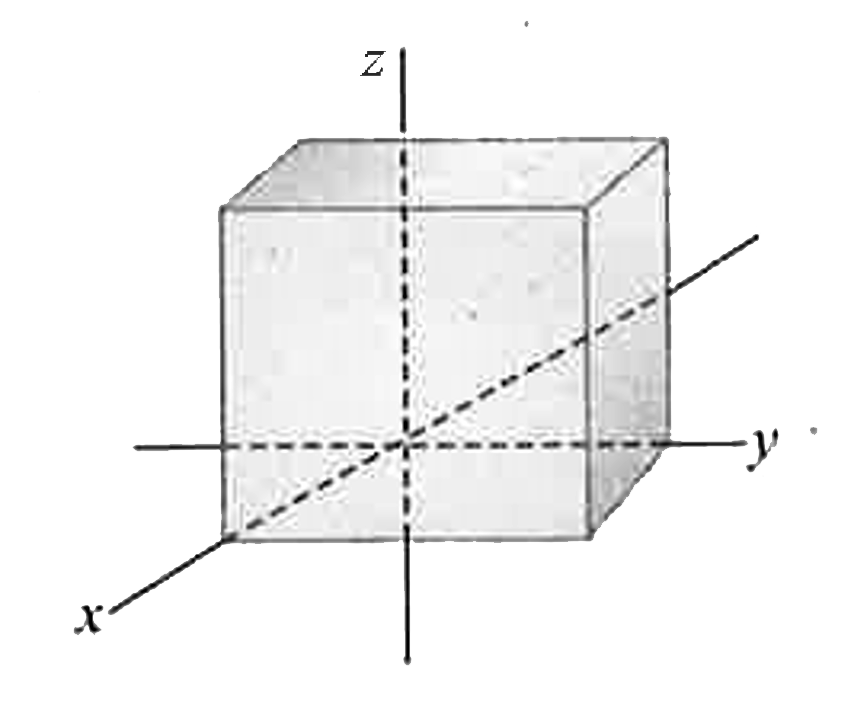The total charge enclosed in an incremental volume of 2×10−9m3 located at the origin is ____nC, if electric flux density of its field is found as D=e−xsinyˆi−e−xcosyˆj+2zˆkC/m2
To find the total charge enclosed in an incremental volume of 2×10−9m3 at the origin, given the electric flux density D=e−xsiny^i−e−xcosy^j+2z^kC/m2, we can follow these steps:
Step 1: Calculate the divergence of the electric flux density D
The total charge density ρ can be found using Gauss's law in differential form, which states:
ρ=∇⋅D
To compute the divergence ∇⋅D, we need to take the partial derivatives of each component of D.
Step 2: Compute the divergence
The components of D are:
- Dx=e−xsiny
- Dy=−e−xcosy
- Dz=2z
Now, we compute the divergence:
∇⋅D=∂Dx∂x+∂Dy∂y+∂Dz∂z
Calculating each term:
1. For Dx:
∂Dx∂x=∂∂x(e−xsiny)=−e−xsiny
2. For Dy:
∂Dy∂y=∂∂y(−e−xcosy)=e−xsiny
3. For Dz:
∂Dz∂z=∂∂z(2z)=2
Now, substituting these into the divergence equation:
∇⋅D=−e−xsiny+e−xsiny+2=2
Step 3: Find the total charge density ρ
From the divergence, we find:
ρ=∇⋅D=2C/m3
Step 4: Calculate the total charge Q
The total charge Q enclosed in the volume V=2×10−9m3 is given by:
Q=ρ⋅V
Substituting the values:
Q=2C/m3×2×10−9m3=4×10−9C
Step 5: Convert to nanocoulombs
Since 1nC=10−9C:
Q=4×10−9C=4nC
Final Answer
The total charge enclosed in the incremental volume is 4nC.
---
- Dx=e−xsiny
- Dy=−e−xcosy
- Dz=2z
∂Dx∂x=∂∂x(e−xsiny)=−e−xsiny
∂Dy∂y=∂∂y(−e−xcosy)=e−xsiny
∂Dz∂z=∂∂z(2z)=2
Topper's Solved these Questions
- JEE MAINS 2021Book:JEE MAINS PREVIOUS YEARChapter:JEE MAINS 2021Exercise:PHYSICS (SECTION - A)
Explore 40 Videos
- JEE MAINS 2021Book:JEE MAINS PREVIOUS YEARChapter:JEE MAINS 2021Exercise:PHYSICS (SECTION - B)
Explore 20 Videos
- JEE MAINS 2021Book:JEE MAINS PREVIOUS YEARChapter:JEE MAINS 2021Exercise:Physics (Section B )
Explore 10 Videos
- JEE MAINS 2020Book:JEE MAINS PREVIOUS YEARChapter:JEE MAINS 2020Exercise:PHYSICS
Explore 246 Videos
- JEE MAINS 2022Book:JEE MAINS PREVIOUS YEARChapter:JEE MAINS 2022Exercise:PHYSICS (SECTION -B)
Explore 10 Videos
Similar Questions
Knowledge Check
Let V0 be the potential at the origin in an electric field →E=Exˆi+Eyˆj. The potential at the point (x,y) is
AV0−xEx−yEyBV0+xEx+yEyCxEx+yEy−V0D(√x2+y2)√E2x+E2y−V0Electric flux through a surface area 10m2 lying in the xy plane in SI units is (if→E=ˆi+√2ˆj+√3ˆkN/C)
A100B141.4C17.32D200A uniform electric field E=2×103NC−1 is acting along the positive x-axis. The flux of this field through a square of 10 cm on a side whose plane is parallel to the yz plane is
A20NC−1m2B30NC−1m2C10NC−1m2D40NC−1m2
What is the total charge enclosed by a closed surface if the electric flux entering and leaving the surface are 20000 NC−1m2 and 30000 NC−1m2 respectively.
View SolutionThe cube in figure has edge length √2m and is oriented as shown in a region of uniform electric field , in newtons per coulomb, is given by (a)6.00ˆi,(b)−2.00ˆj,and(c)−3.00ˆj+4.00ˆk . (d) what is the total flux through the cube for each field ?

View SolutionA particle having charge 'q' and mass 'm' is projected with velocity (4ˆi−6ˆj+3ˆk)m/sec from the origin in a region occupied by electric field 'E' and magnetic field 'B' such that →B=B0ˆi and →E=E0ˆj (take qE0m=2). Find the time (in sec) when the magnitude of velocity of the charge particle becomes 5√5m/sec. (neglect the gravity)
View SolutionIf →E=35ˆi+45ˆj then find electric flux through an area of 0.4 m^2 parallel to y-z plane
View SolutionA small sphere is charged unifomly and placed at some point A(x0,y0) so that at point B(9m,4m) electric field strength is →E=(54ˆi+72ˆj)NC−01 and potential is 1800V. Then
View Solution
